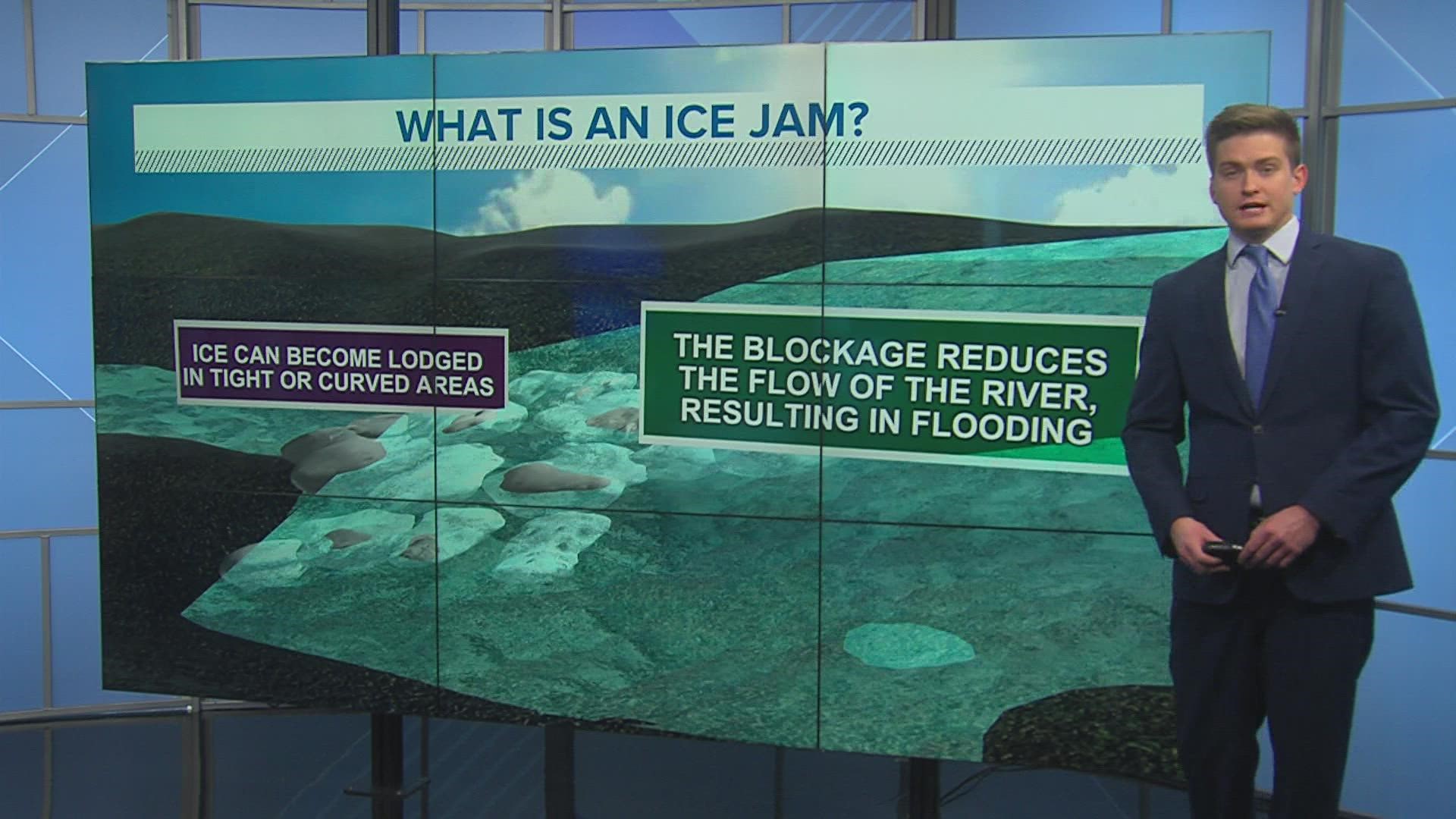DES MOINES, Iowa — The end of winter is an exciting time in Iowa, but it is also the time of the year to be on the lookout for flooding along the state's many rivers.
River flooding in Iowa is most often caused by a combination of snowmelt, heavy spring precipitation, and wet soils.
Occasionally though, this flooding is caused by ice jams.
When the weather warms up, the ice that coats our rivers in the winter breaks apart.
As these chunks of ice flow downstream, they can get lodged in tight or curved sections of the river.
The ice jam blocks the flow of the river, resulting in flooding for areas near the blockage.
This can spell trouble for communities close to large rivers.
The rising water can cause damage to bridges as well.
River ice typically begins to break apart when high temperatures are above 40° for three to five consecutive days.
A recent study from the National Weather Service in Des Moines found ice jams in central Iowa are most common on the Des Moines River.
RELATED: WEATHER LAB | Why do you feel colder on a winter day with high humidity? It's your wardrobe
Common ice jam locations in central Iowa include the following:
- Des Moines River near Fort Dodge
- Raccoon River near Jefferson, Van Meter and Des Moines
- Iowa River near Marshalltown
- Beaver Creek near New Hartford
While ice jams are most common at the end of winter, they can occasionally occur at the beginning of winter when the first round of ice forms and then thaws out.
► Download the We Are Iowa app
► Sign up for Local 5's "5 Things to Know" email newsletter
► Subscribe to Local 5 News on YouTube
Watch more Local 5 Weather Lab videos on YouTube

